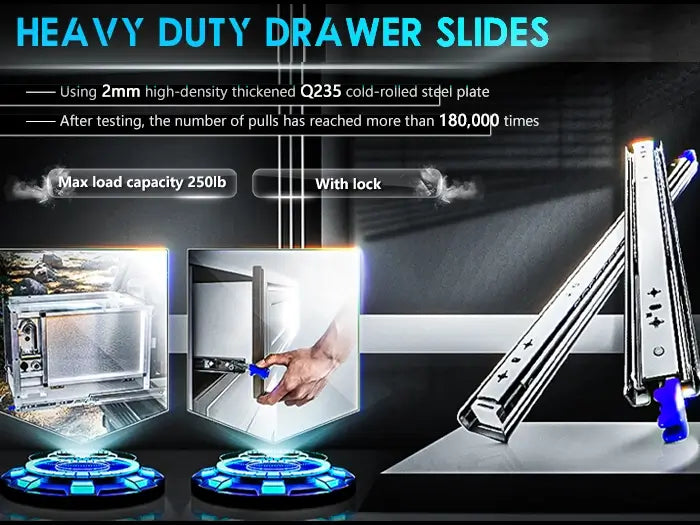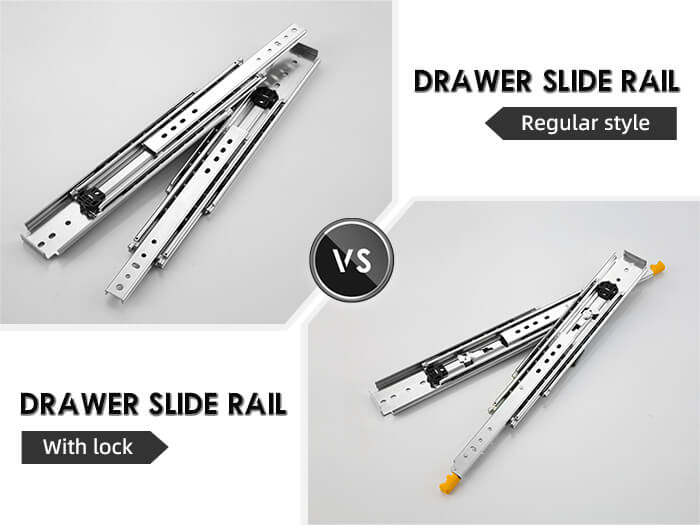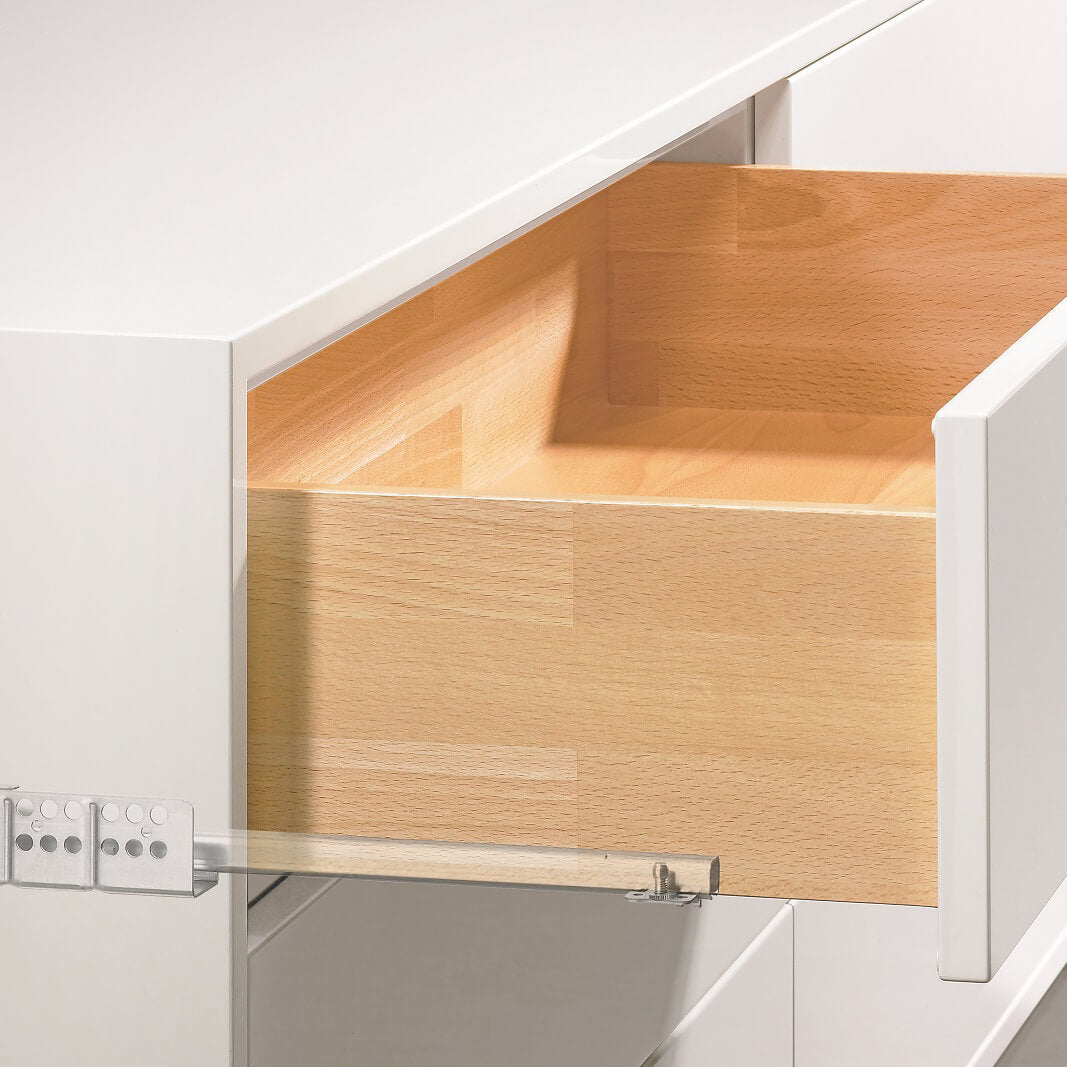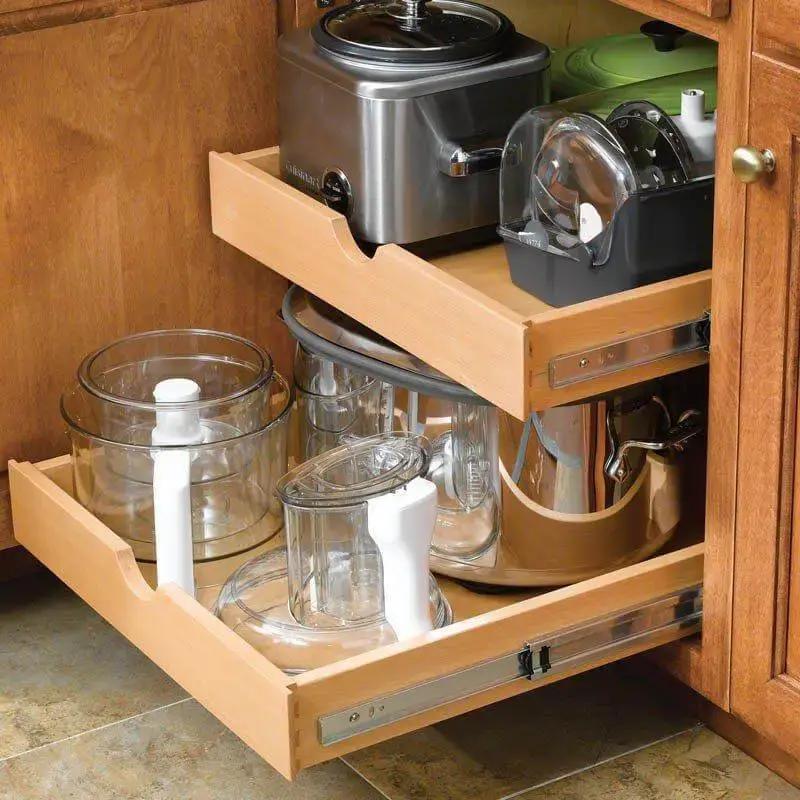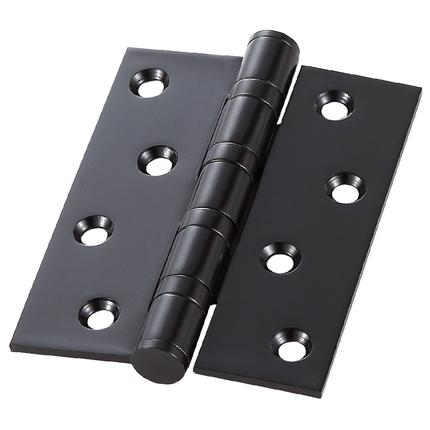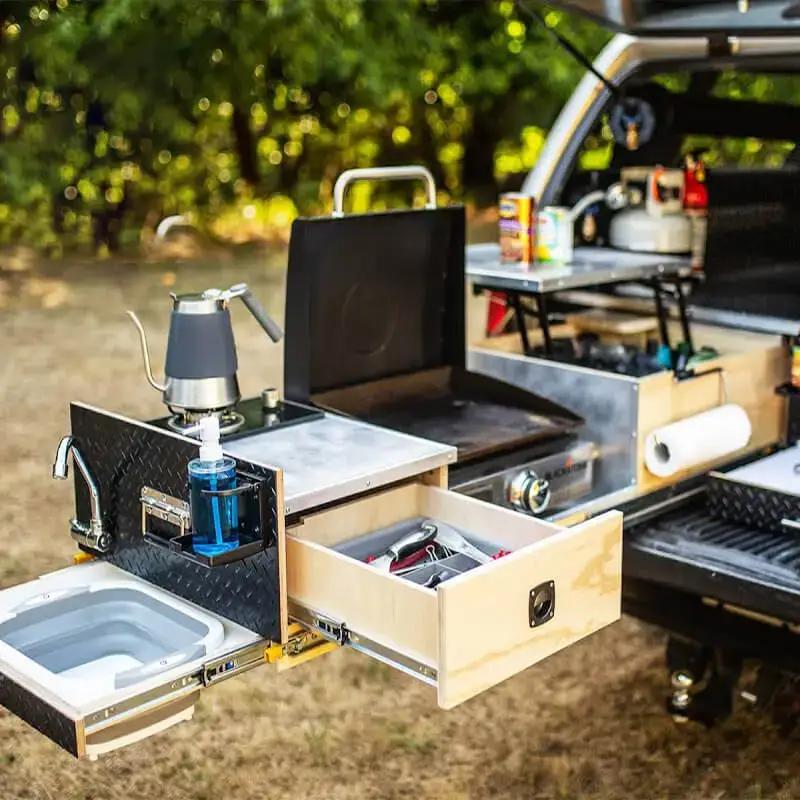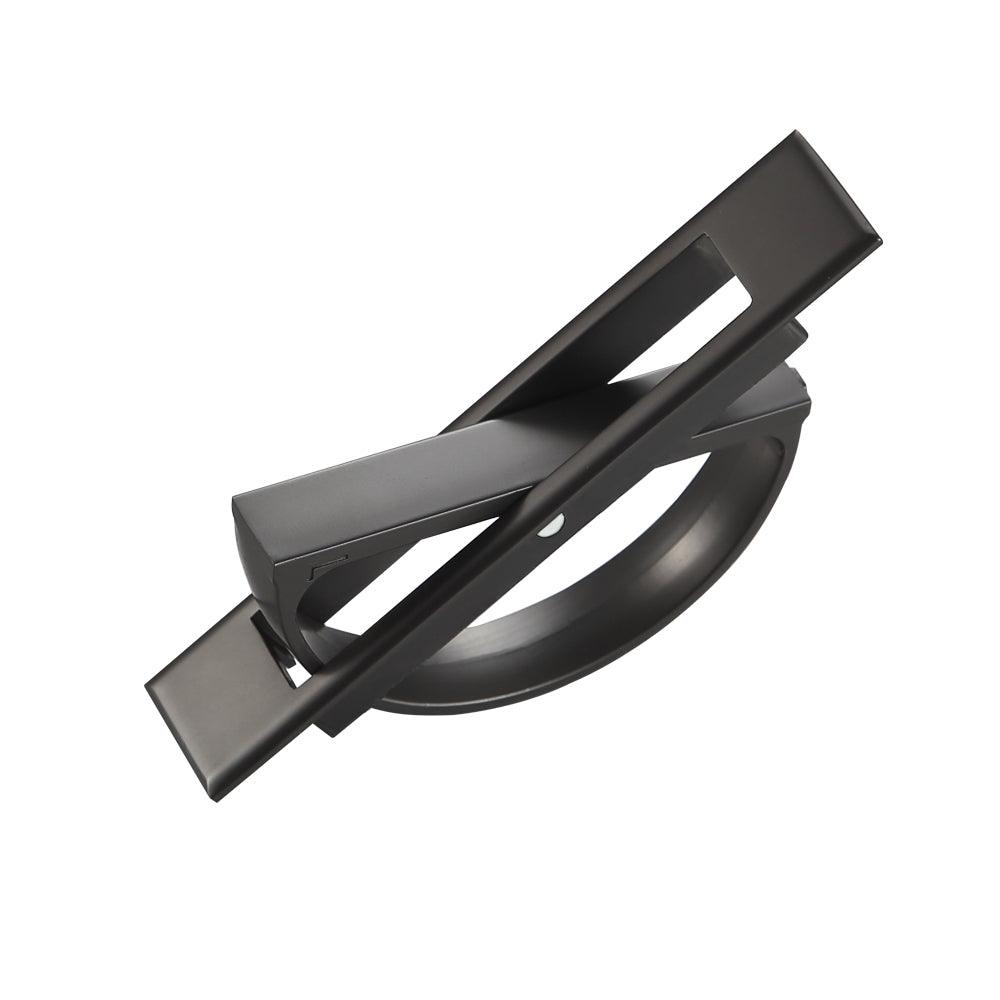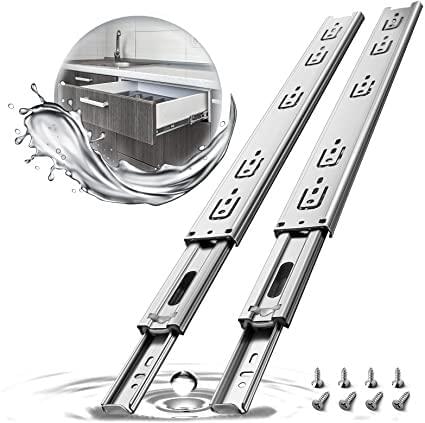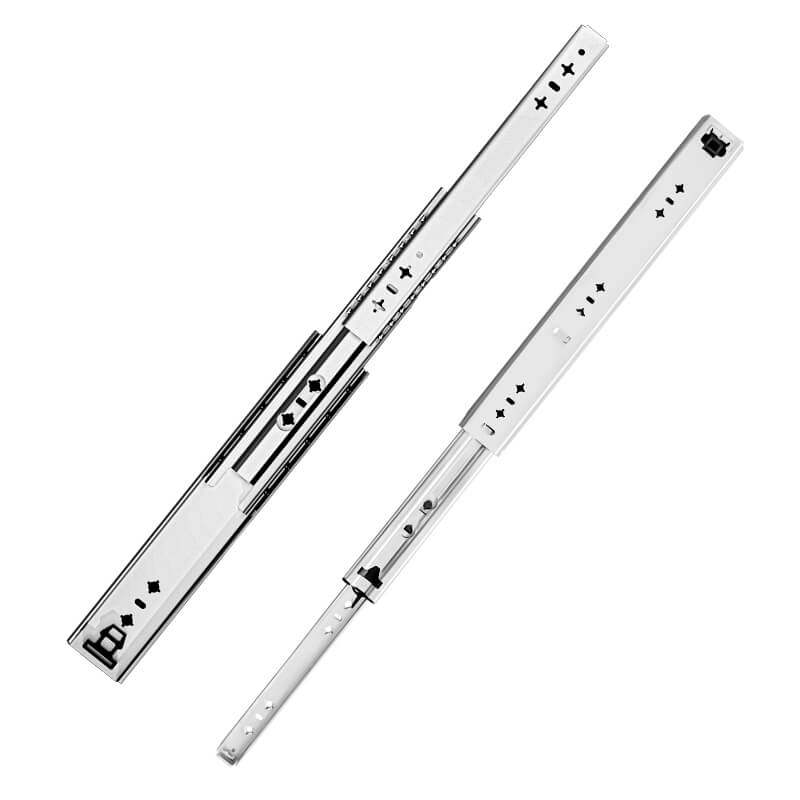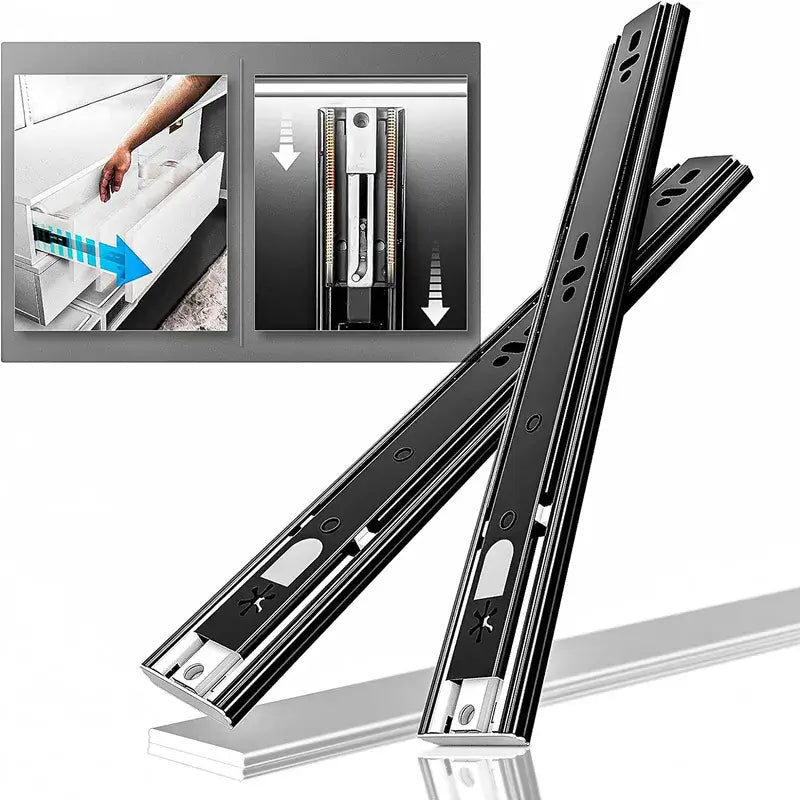Welcome to our comprehensive guide on how to care fordrawer slides. Whether you havedrawer slides installed in your kitchen cabinets, office furniture, or any other application, it's essential to maintain them properly.drawer slides play a crucial role in providing stability, security, and ease of use. In this article, we'll walk you through the steps of caring for yourdrawer slides, ensuring they remain in top-notch condition for years to come. Let's dive in and discover the secrets to keeping your drawer slides in optimal shape!
1.UnderstandingDrawer Slides
2.Why Care and Maintenance Matters
3.Cleaning and LubricatingDrawer Slides
4.Inspecting for Damage and Wear
5.Repairing and ReplacingDrawer Slides
6.Preventative Measures for Longevity
7.Conclusion
8.FAQ
1.UnderstandingDrawer Slides

drawer slides are a type of drawer slide mechanism designed to provide stability and security to drawers. Unlike standard drawer slides, which allow the drawer to open and close freely,drawer slides have an additionalmechanism that keeps the drawer securely closed. Thismechanism ensures that the drawer remains in place, even during movement or vibrations.drawer slides are commonly used in applications where it is essential to prevent the accidental opening of drawers, such as in mobile homes, RVs, tool cabinets, and industrial storage units. With their ability to secure drawers in place,drawer slides offer enhanced safety and organization. Let's delve deeper into how these innovative drawer slides work and the benefits they provide.
2.Why Care and Maintenance Matters
Proper care and maintenance ofdrawer slides are crucial to ensure their optimal performance and longevity. By taking the time to care for your drawer slides, you can avoid issues such as malfunctioning, damage, and premature wear. Regular maintenance not only keeps your drawer slides in excellent working condition but also extends their lifespan, saving you from the hassle and cost of frequent replacements. Neglecting care and maintenance, on the other hand, can lead to a range of problems, including sticking or jamming drawers, reduced slide functionality, and even complete failure of themechanism. To avoid these issues and enjoy smooth and secure drawer operation, it is essential to incorporate proper care and maintenance practices into your routine. In the following sections, we will explore some useful tips and techniques to help you maintain yourdrawer slides effectively.
3.Cleaning and LubricatingDrawer Slides
To maintain the optimal performance of yourdrawer slides, regular cleaning and lubrication are essential. Over time, dust, dirt, and other debris can accumulate on the slides, hindering their smooth movement. Cleaning the slides helps remove this buildup and ensures hassle-free operation. Start by removing the drawers and inspecting the slides for any visible dirt or residue. Use a soft cloth or brush to gently wipe away the debris. For stubborn stains or sticky substances, you may need to use a mild detergent or specialized cleaner recommended for the material of your drawer slides. Be sure to thoroughly dry the slides before reassembling the drawers.
Once the slides are clean, it's time to lubricate them for smooth gliding action. Choose a lubricant specifically designed for drawer slides, such as silicone-based or dry lubricants. Apply a small amount of lubricant to the slides, focusing on the areas where the drawer and slides come into contact. Use a clean cloth or your fingers to spread the lubricant evenly. Avoid applying excessive amounts, as it can attract more dirt and debris.
Regular cleaning and lubrication, ideally every 3-6 months, will help maintain the optimal functionality of yourdrawer slides and prevent premature wear. By incorporating these simple steps into your maintenance routine, you can enjoy smooth and effortless drawer operation for years to come.
4.Inspecting for Damage and Wear
Regular inspection of yourdrawer slides is crucial to ensure their optimal performance and prevent potential issues. Over time, slides can experience damage or wear, compromising their ability to function properly and securely hold your drawers. By incorporating a simple inspection routine, you can identify and address any issues before they escalate.
Start by removing the drawers and visually examining the slide tracks for any signs of damage, such as bends, cracks, or breaks. Check the mounting brackets and screws for looseness or damage, as they play a critical role in securing the slides. Additionally, inspect themechanisms, if applicable, to ensure they engage and disengage smoothly.
Pay attention to any visible wear on the slide surfaces, such as scratches, abrasions, or worn-out areas. Excessive wear can lead to unstable drawer movement or difficulty inthe slides. If you notice any of these issues, it's essential to replace the damaged or worn-out slides promptly.
During the inspection, also check for proper alignment of the slides. Misaligned slides can cause the drawers to stick or not close properly. Adjust any misalignments by loosening the mounting screws, repositioning the slides, and then tightening the screws again.
By conducting regular inspections and addressing any damage or wear immediately, you can extend the lifespan of yourdrawer slides and maintain their functionality and security. Remember, a proactive approach to maintenance and repairs will save you from potential headaches down the line.

5.Repairing and ReplacingDrawer Slides
Properly functioningdrawer slides are essential for the smooth operation and security of your drawers. Over time, these slides may experience wear and tear or encounter issues that affect their performance. Fortunately, many problems can be resolved through simple repairs, while others may require complete replacement.
If you notice loose screws or mounting brackets, start by tightening them using a screwdriver. This can help stabilize the slides and improve their functionality. For misaligned slides, loosen the mounting screws, adjust the position of the slides to ensure proper alignment, and then tighten the screws again.
In some cases, more significant issues may necessitate replacing thedrawer slides altogether. Common reasons for replacement include broken or damaged slides, excessive wear, or ineffectivemechanisms. When selecting replacement slides, ensure they are compatible with your drawer system and have the same load capacity to support the weight of your drawers.
Before beginning the replacement process, remove the drawers and carefully uninstall the existing slides. Follow the manufacturer's instructions for installing the new slides, making sure to secure them firmly to the cabinet and align them properly. Test the slides by sliding the drawers in and out to ensure smooth operation and secure locking.
Remember, if you encounter complex issues or are unsure about the repair or replacement process, it's best to consult a professional or contact the manufacturer for guidance. Taking prompt action to address problems with yourdrawer slides will help maintain the functionality and security of your drawers, extending their lifespan and enhancing your overall user experience.
6.Preventative Measures for Longevity
Highlight the importance of preventative measures in prolonging the lifespan ofdrawer slides.
Provide tips on how to prevent common issues, such as excessive weight, dirt and debris buildup, and improper usage.
Discuss the benefits of regular inspection and maintenance routines for identifying and addressing potential problems early on.
While proper care and maintenance are crucial for the longevity ofdrawer slides, taking preventative measures can significantly reduce the chances of encountering issues in the first place. By following a few simple guidelines, you can ensure the optimal performance and durability of your drawer slides.
One of the primary factors to consider is the weight capacity of thedrawer slides. Exceeding the recommended weight limit can put excessive strain on the slides, leading to premature wear and potential failure. Be mindful of the weight you place in each drawer and distribute it evenly across the slide system.
Regular cleaning is also essential to prevent dirt, dust, and debris from accumulating on the slides. Wipe down the slides with a clean cloth and mild soapy water, taking care to remove any particles that may affect the smooth operation of the slides. Avoid using harsh chemicals or abrasive cleaners that could damage the slides' finish.
Proper usage is another crucial aspect of preventative measures. Avoid slamming the drawers shut, as this can strain the slides and impact their functionality over time. Teach household members or users to handle the drawers with care, ensuring they fully extend and retract the drawers without excessive force.
Performing regular inspections of thedrawer slides is highly recommended. Check for any signs of wear, loose screws, or misalignment. Tighten any loose screws and adjust misaligned slides promptly to prevent further damage. Additionally, lubricating the slides with a silicone-based lubricant can help maintain their smooth operation.
By implementing these preventative measures, you can significantly extend the lifespan of yourdrawer slides and minimize the likelihood of encountering issues. Taking a proactive approach to care and maintenance will not only save you time and money on repairs or replacements but also ensure the continued functionality and security of your drawers.

7.Conclusion
In conclusion, caring fordrawer slides is essential to ensure their optimal performance and longevity. By following the proper maintenance techniques, such as cleaning, lubricating, inspecting for damage, and taking preventative measures, you can extend the lifespan of yourdrawer slides and avoid unnecessary issues.
Regular cleaning and lubrication help to remove dirt and debris and keep the slides operating smoothly. Inspecting for damage and wear allows you to identify and address any issues early on, preventing further damage. Repairing or replacing damaged slides in a timely manner is crucial to maintaining their functionality.
Taking preventative measures, such as distributing weight evenly, using drawers with care, and performing regular inspections, can help prevent problems from arising in the first place. By being proactive and addressing any issues promptly, you can avoid costly repairs or replacements and ensure the continued security and functionality of your drawers.
Remember, proper care and maintenance not only protect your investment indrawer slides but also contribute to the overall organization and efficiency of your space. By incorporating these practices into your routine, you can enjoy smooth and secure drawer operations for years to come.
8. FAQ
What do you lubricate drawer slides with?
For metal drawer slides: Silicone-based lubricants or dry lubricants like graphite powder are ideal. They provide smooth and long-lasting lubrication without attracting dust and debris.
How do you lubricate wooden drawer slides?
For wooden drawer slides: Beeswax or paraffin wax can be used to lubricate wooden slides. Apply a thin layer of wax along the contact surfaces to reduce friction and ensure smooth sliding.
How do you lubricate plastic drawer slides?
For plastic drawer slides: Teflon-based lubricants or silicone sprays are suitable for plastic slides. These lubricants provide a slippery film that reduces friction and helps the slides glide smoothly.
What is the best lubricant for drawer glides?
1.Non-greasy and long-lasting: Silicone lubricants are formulated to be non-greasy, which means they won't attract dust or debris. They also have excellent longevity, providing long-lasting lubrication for your drawer glides.
2.High lubricity: Silicone lubricants offer exceptional lubricity, reducing friction between the drawer glides. This allows for smooth and effortless movement of the drawers, preventing sticking or jamming.
3.Compatibility with various materials: Silicone lubricants are safe to use on a wide range of materials, including metal, plastic, and wood. This makes them suitable for different types of drawer glides commonly found in furniture.
4.Water-resistant: Silicone lubricants have water-resistant properties, which help protect the drawer glides from moisture and humidity. This is particularly beneficial in environments prone to high humidity or moisture exposure.



